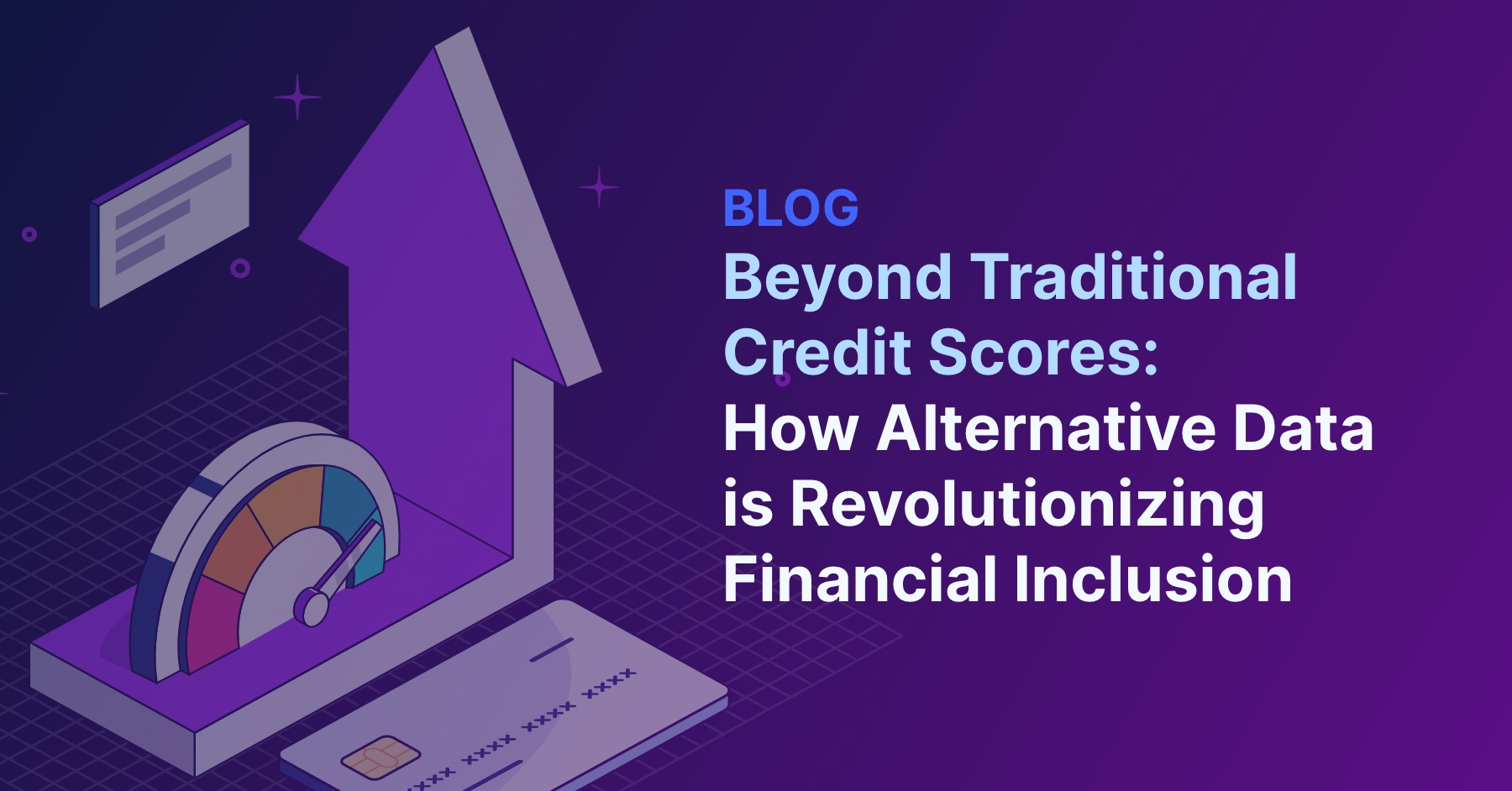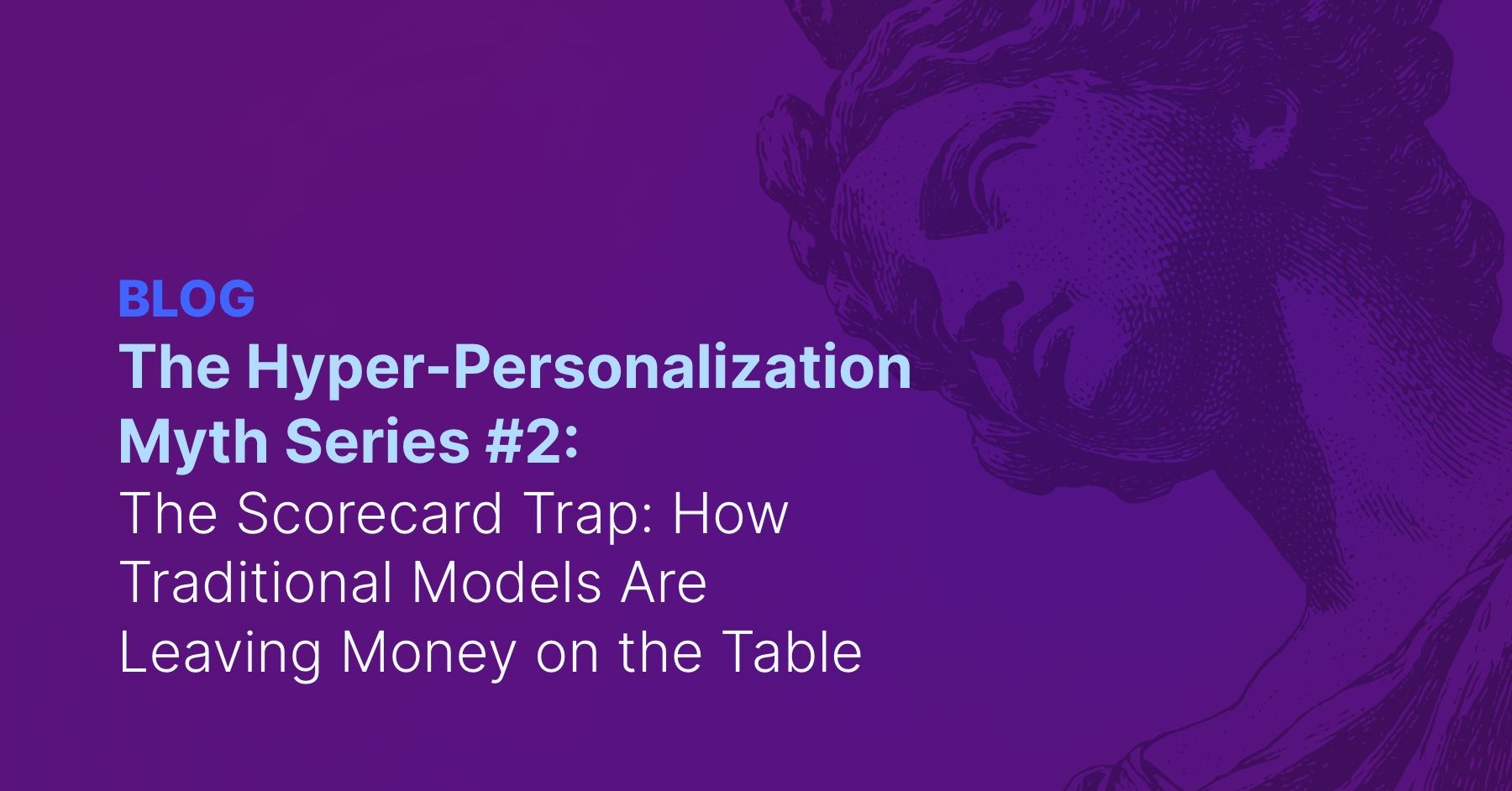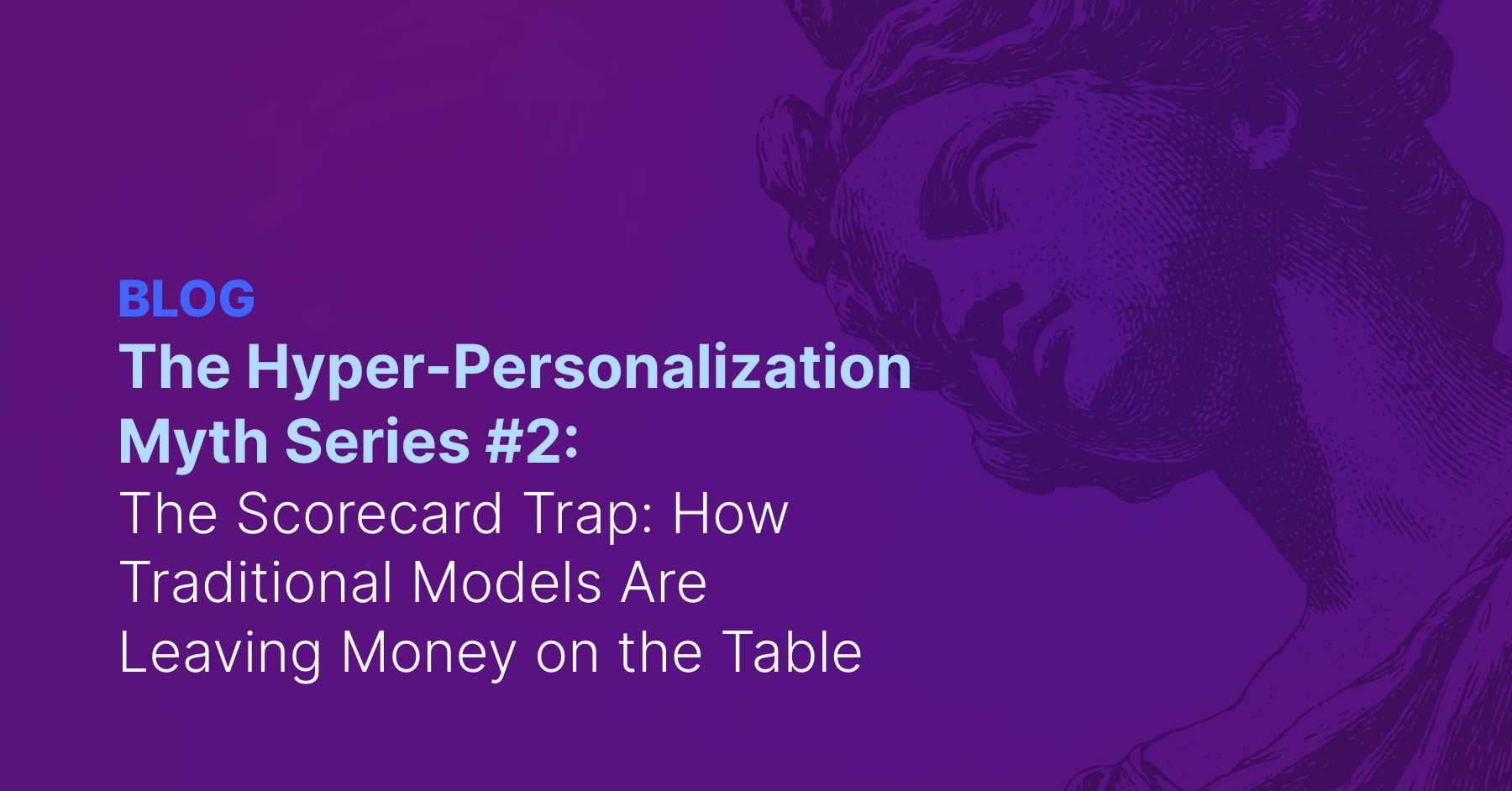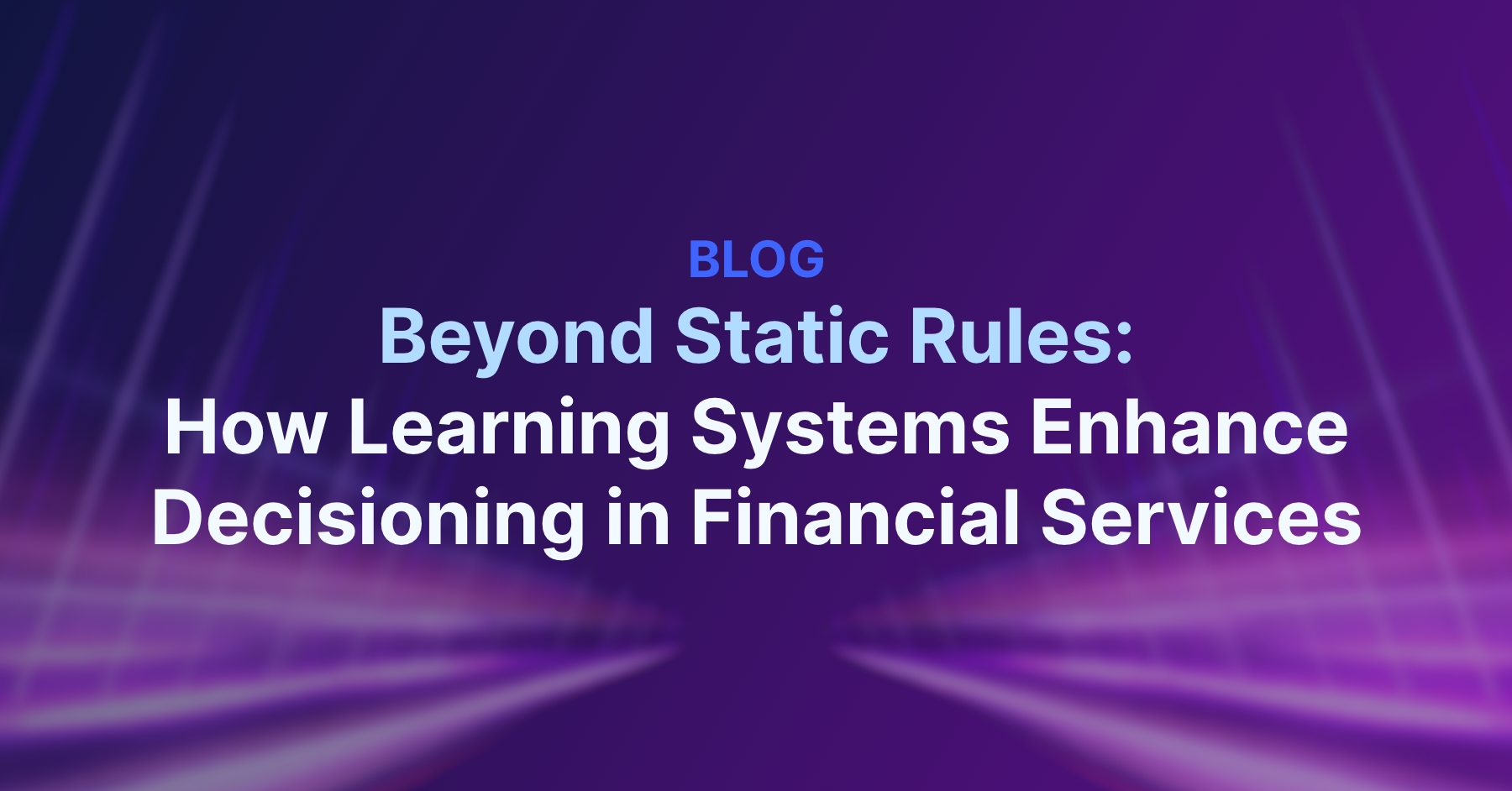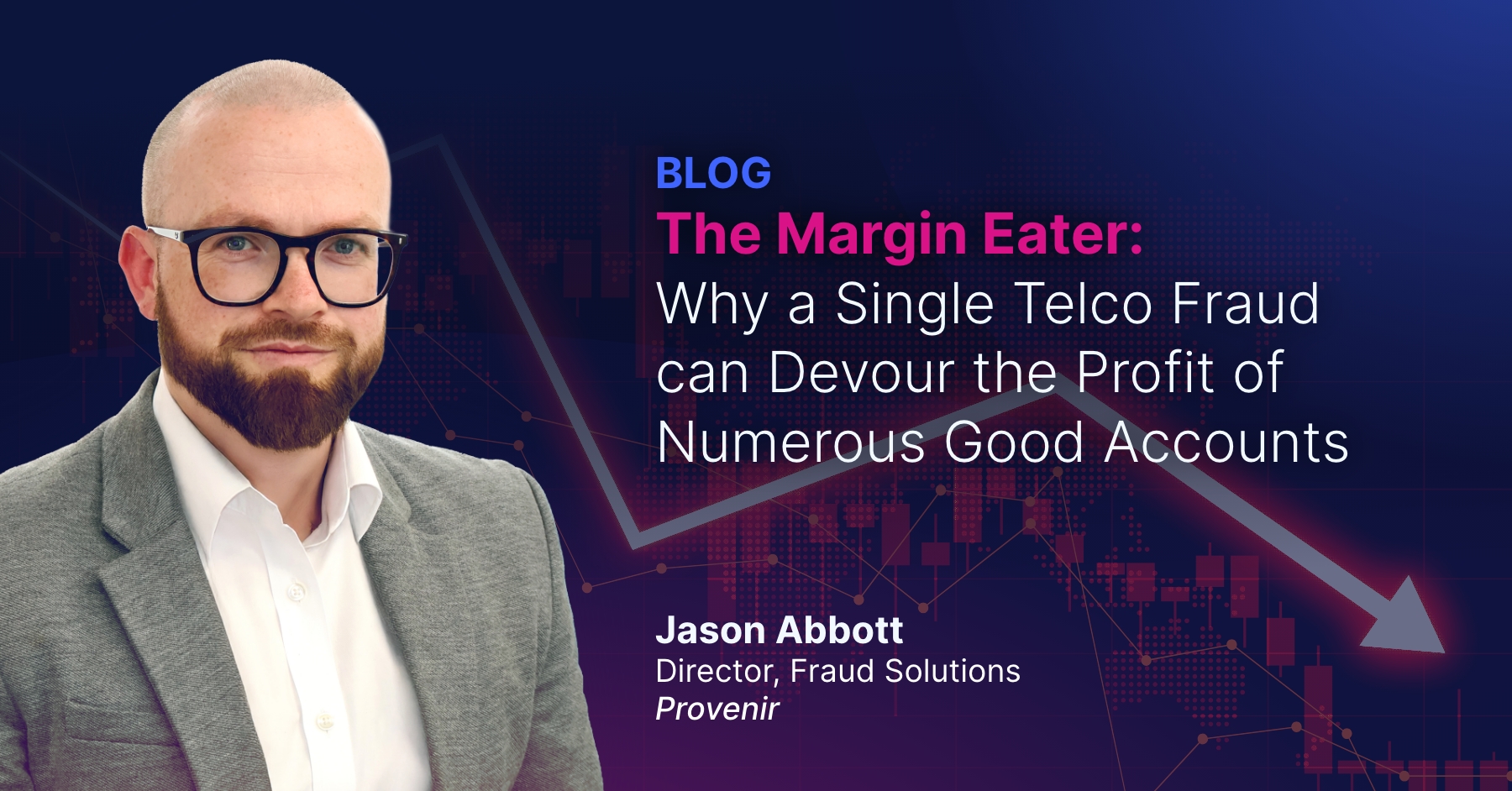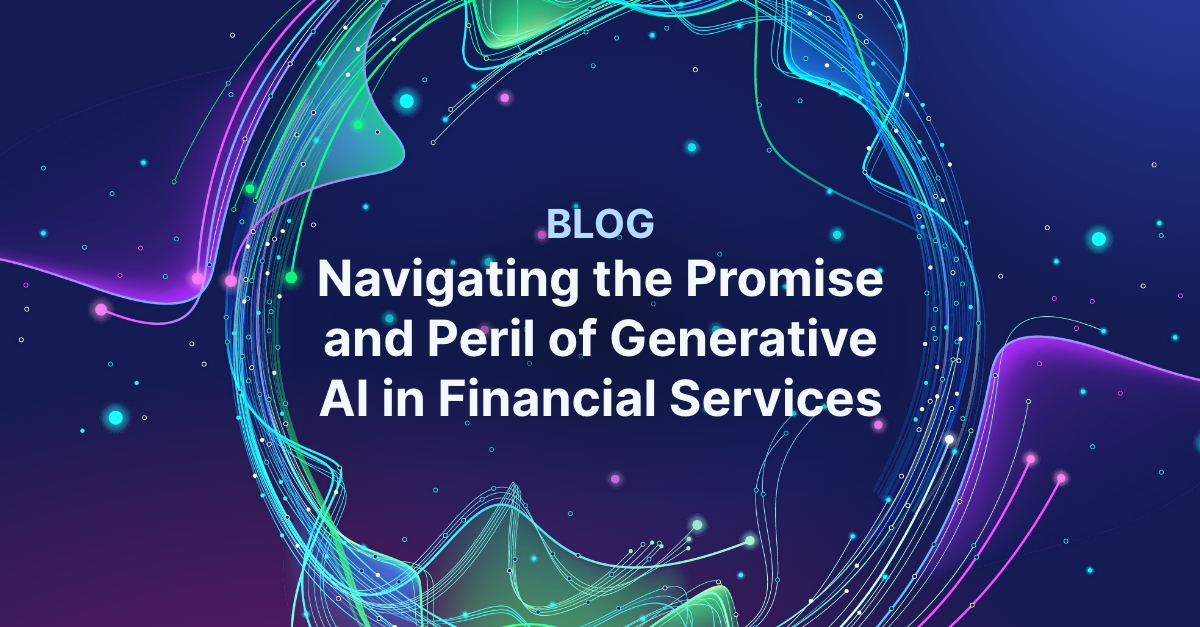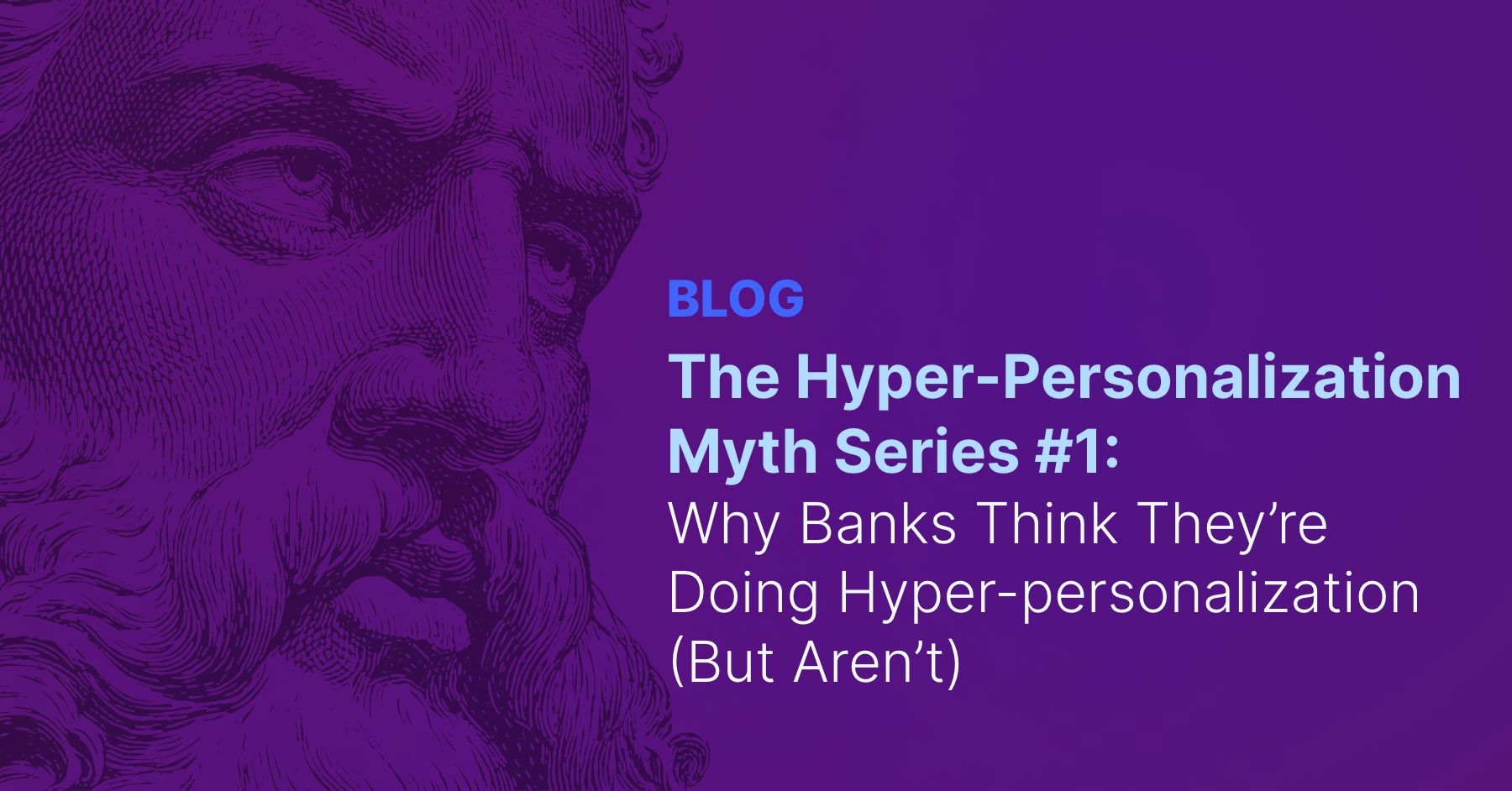The Hyper-personalization Myth Series 2
The Hyper-personalization Myth Series #2:
The Scorecard Trap: How Traditional Models Are Leaving Money on the Table
Your institution has invested millions in analytics. You’ve built scorecards, deployed predictive models, and segmented your customer base into carefully defined groups. Your risk teams use these tools daily. Your data science team maintains them diligently.
And yet, you’re still losing to competitors who seem to make better decisions faster. Your customer satisfaction scores aren’t improving despite all this sophistication. Your profit per customer remains stubbornly flat.
Here’s why: scorecards and traditional segmentation models (the backbone of financial services decisioning for decades) were designed for a different era. They’re leaving enormous value on the table because they fundamentally cannot deliver what today’s market demands: truly individualized treatment at scale.
The Scorecard Legacy
Scorecards became ubiquitous in financial services for good reason. They’re transparent, explainable to regulators, and relatively simple to implement. A credit scorecard might use 10-15 variables to generate a risk score. Customers above a certain threshold get approved; those below get declined. Some institutions have dozens of scorecards for different products, channels, and customer segments.
The problem isn’t that scorecards don’t work—it’s that they’re fundamentally limited by their simplicity. Consider what a scorecard actually does: it takes a handful of variables, applies predetermined weights, and outputs a single number. That number then gets used to make a binary or simple categorical decision.
This approach made perfect sense when computational power was limited and data was scarce. But in today’s environment, where institutions have access to hundreds of data points per customer and virtually unlimited processing capability, scorecards are like using an abacus in the age of supercomputers.
The mathematical reality is stark: a scorecard might consider 15 variables. Modern machine learning models can process hundreds or thousands of variables, identifying complex patterns and interactions that scorecards miss entirely. More critically, optimization algorithms can then use those insights to determine individual optimal actions while balancing multiple business objectives simultaneously.
The Segmentation Illusion
High-income vs. low-income customers
Young professionals vs. retirees
Urban vs. rural customers
High credit scores vs. marginal credit
Long-tenure vs. new customers
This feels like personalization. An institution might have 20, 50, or even 100 different segments, each with tailored strategies. But this is still fundamentally a bucketing approach, and buckets, no matter how numerous, cannot capture individual-level optimization.
Consider two customers in the same segment: both are 35-year-old professionals with $80,000 income, 720 credit scores, and $50,000 in deposits. By any reasonable segmentation logic, they should receive identical treatment. But look closer:
Customer A:
- Has been with the institution for 8 years
- Holds checking, savings, and an auto loan
- Uses digital channels 90% of the time
- Has never called customer service
- Lives in a competitive market with three other branches nearby
- Recently searched for mortgage rates online
Customer B:
- Opened an account 6 months ago
- Has only a checking account with direct deposit
- Visits branches frequently
- Has called customer service three times about fees
- Lives in a rural area with limited banking options
- Just paid off student loans
The optimal product, pricing, and engagement strategy for these two customers is completely different, but segmentation treats them identically because they fit the same demographic and credit profile.
True Hyper-personalization recognizes that Customer A is at risk of moving their mortgage business to a competitor and should receive a proactive, digitally-delivered, competitively-priced mortgage offer. Customer B is a safe customer who values in-person service and should receive education about additional products delivered through branch interactions.
No segmentation strategy, no matter how sophisticated, can capture these nuances at scale across thousands of customers.
The Evolution:Rules → Predictive → Prescriptive
STAGE 1:
Rules and Scorecards
This is where most institutions still operate for many decisions. Fixed rules and simple scorecards determine actions: “If credit score > 700 AND income > $50K, approve up to $10K.” These provide consistency and explainability but leave massive value on the table because they cannot adapt to individual circumstances or balance multiple objectives.STAGE 2:
Predictive Analytics
Institutions deploy machine learning models that generate probabilities: “This customer has a 23% probability of default, 67% propensity to purchase, and 15% likelihood of churn in 90 days.” This is a significant improvement—the predictions are more accurate and can consider many more variables than scorecards.
But here’s the trap: many institutions stop here and think they’ve achieved personalization. They have better predictions, but humans still make the decisions based on those predictions. A product manager reviews the propensity scores and decides which customers get which offers. This is still segmentation with extra steps.
STAGE 3:
Prescriptive Optimization
This is true hyperpersonalization: algorithms determine the optimal action for each individual customer while simultaneously considering:
- Multiple predictive models (risk, propensity, lifetime value)
- Business objectives (profitability, growth, risk-adjusted returns)
- Operational constraints (budget, inventory, capacity)
- Strategic priorities (market share, customer satisfaction, competitive positioning)
- Regulatory requirements
The output isn’t a prediction or a score—it’s a specific decision: “Offer Customer 1,547 a $12,000 personal loan at 8.2% APR with 36-month terms, delivered via email on Tuesday morning.”
Why Individual Treatment Isn’t Optional Anymore
The shift from segmentation to individual optimization isn’t just about squeezing out marginal improvements—it’s about remaining competitive in a market where customer expectations have been fundamentally reset.
Consider what your customers experience in their daily digital lives:
- Netflix doesn’t show the same content recommendations to everyone aged 25-34 with similar viewing history—it creates individual recommendations for each user
- Amazon doesn’t display the same products to everyone in the same demographic segment—it personalizes down to the individual
- Spotify doesn’t create the same playlists for everyone who likes rock music—it generates unique mixes for each listener
Your customers experience this level of personalization dozens of times per day. Then they interact with their financial institution and receive the same generic offers as thousands of other customers in their segment.
The disconnect creates real business impact:
Offers that aren’t relevant get ignored, wasting marketing spend
Products that don’t match individual needs generate low engagement and high attrition
Generic credit decisions either take excessive risk or miss profitable opportunities
Customers increasingly expect better and defect to competitors who deliver it
The Structural Limitations of Segmentation
- Constraint Blindness:
Segments cannot optimize resource allocation. If you have 10,000 customers in a segment and budget for 3,000 offers, which 3,000 should receive them? Segmentation can’t answer this; it requires optimization. - Multi-Objective Failure:
Should you prioritize profitability or customer lifetime value? Risk minimization or growth? Segments force you to choose. Optimization can balance multiple objectives simultaneously. - Inflexibility:
Market conditions change, but segments are relatively static. Rebuilding segmentation strategies takes weeks or months. Re-running optimization takes minutes.
The Path Forward
The transition from scorecards and segmentation to true Hyper-personalization requires honest assessment of where you are versus where the market is heading.
Ask yourself these diagnostic questions:
- Are you still using scorecards for primary decisions?
If yes, you’re operating with 1990s technology in a 2025 market. Scorecards provide consistency but cannot compete with approaches that consider hundreds of variables and complex interactions. - Do you rely on segmentation strategies with fixed rules per segment?
If yes, you’re leaving money on the table even if you have sophisticated segments. No bucketing approach can optimize individual decisions while balancing multiple objectives and constraints. - After generating predictions, do humans decide actions?
If yes, you’re stuck in Stage 2—you have better information but aren’t leveraging optimization to determine what to do with it. - Can you explain why Customer A received one offer while Customer B received a different offer, beyond “they’re in different segments”?
If not, you’re not doing individual-level optimization.
The institutions winning in today’s market have moved beyond asking “What segment is this customer in?” to “What is the optimal action for this specific customer given all our objectives and constraints?”
That shift—from classification to optimization—is what separates leaders from laggards. Scorecards and segments were brilliant solutions for their time. But that time has passed.
The question is whether your institution will evolve before your competitors do, or whether you’ll spend the next decade wondering why your sophisticated analytics aren’t translating into business results.
